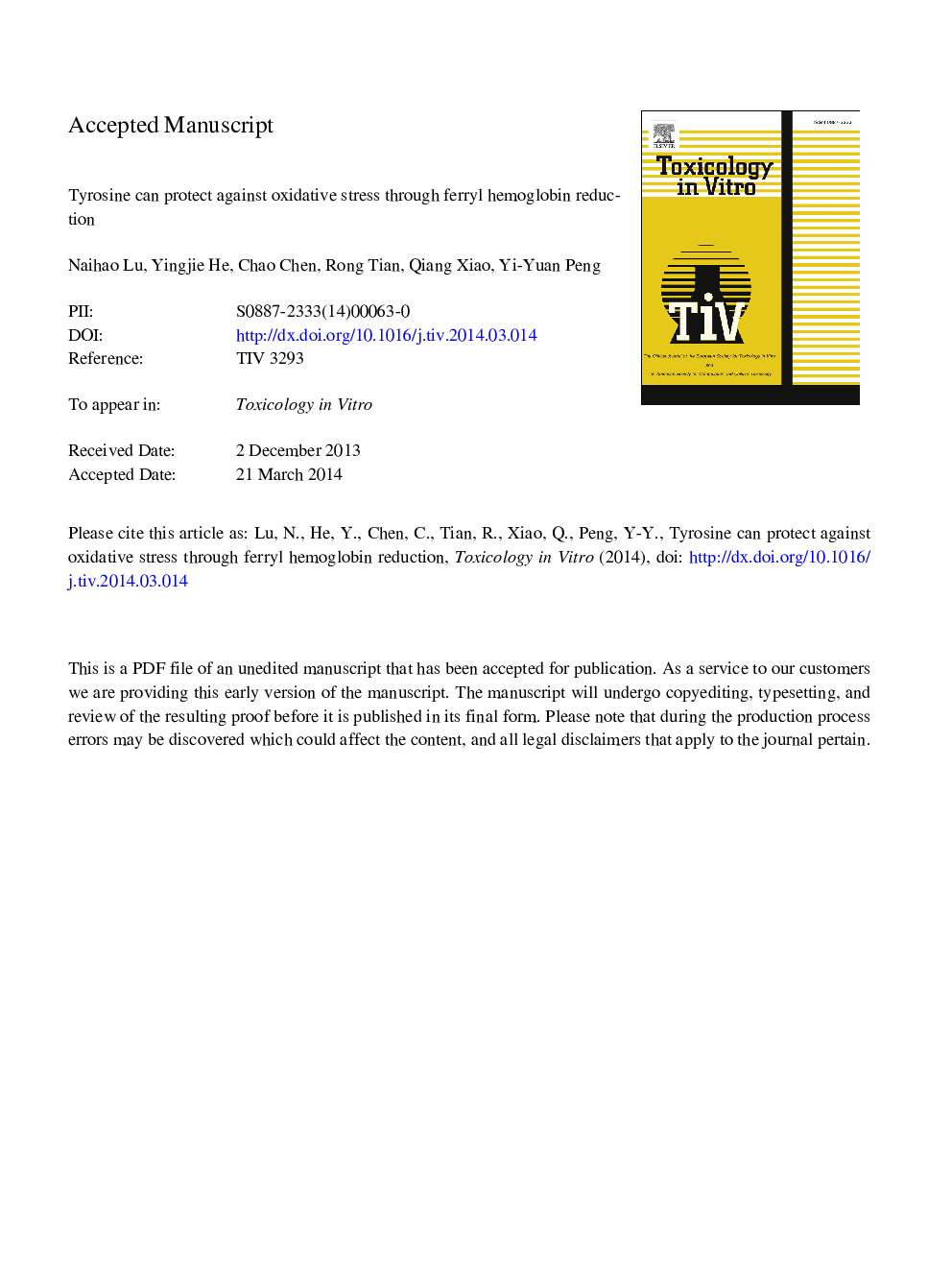| Article ID | Journal | Published Year | Pages | File Type |
|---|---|---|---|---|
| 5862241 | Toxicology in Vitro | 2014 | 38 Pages |
Abstract
The toxic mechanism of hemoglobin (Hb) under oxidative stress is linked to the formations of highly cytotoxic ferryl species and subsequently heme-to-protein cross-linked derivative of Hb (Hb-X). In this study, we have examined the effects of free tyrosine and its analogues (3-chlorotyrosine, phenylalanine) on the stability of ferryl hemoglobin and the formation of Hb-X. The results showed that free tyrosine (not phenylalanine, 10-500 μM) was an efficient reducing agent of ferryl species and also effective at preventing the formation of cytotoxic Hb-X. Meanwhile, the dimeric tyrosine was formed as the oxidation product of tyrosine during Hb redox reaction. Compared with free tyrosine, 3-chlorotyrosine, an oxidation product of tyrosine and a proposed biomarker for hypochlorous acid (HOCl) in vivo, exhibited stronger antioxidant properties in Hb-induced oxidative stress, which was consistent with its more efficient ability in the reduction of ferryl species. These results showed that the presence of tyrosine and its derivative in vivo and vitro could ameliorate oxidative damage through ferryl heme reduction. The antioxidant ability, therefore, may provide new insights into the nutritional and physiological significance of free tyrosine with redox active heme proteins-related oxidative stress.
Keywords
Related Topics
Life Sciences
Environmental Science
Health, Toxicology and Mutagenesis
Authors
Naihao Lu, Yingjie He, Chao Chen, Rong Tian, Qiang Xiao, Yi-Yuan Peng,
